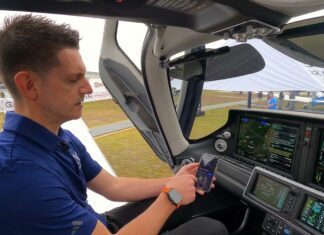Who Needs VORs?
When pilots hit me up for help planning their panel upgrades, one of the most common questions is whether it’s safe to ditch VHF nav systems from the panel. You know, finally get rid of that well- worn King KX155 or KN53. Ask me that a couple of years ago and nine times out of 10 I would say yank ‘em for good. But not anymore, unless the mission is VFR all the time every time. But for even the occasional IFR flying, I’m not so sure WAAS GPS is a sure thing—all the time every time.
Moreover, some shops are just giving bad advice in suggesting that a panel intended for modern IFR flying is fully capable without a backup VHF nav, including glideslope receiver. Part of that reasoning is because Garmin’s so-called budget line of IFR GPS navigators don’t have VHF nav receivers (the GTN series do). Consider that while the FAA isn’t about maintaining the aging network of VORs, it very much expects the VOR/ILS system to be a primary backup during GPS outages. Our sister publications Aviation Safety and IFR magazines have been doing a great job covering this topic, and it’s a deep one that I think every active instrument pilot should learn about. The FAA calls it MON, for minimal operational network, which are VHF nav stations (VOR, localizer and ILS) it will keep active in case the signals for WAAS navigators tank when we need them the most. Many are surprised to learn that the FAA is extending the service volume of low-altitude VOR stations to 70 nautical miles and that puts signal coverage (at least in mostly flat terrain) in place above 5000 feet MSL.
Which ones? They’re identified on a low-altitude IFR chart with a MON label above the airport name. No, you won’t find them on VFR sectional charts. As you would expect, these select airports also have a VOR, localizer or LDA approach. But this doesn’t mean VORs are making a big comeback. Out of roughly 900, nearly one-third (a touch over 300) VOR stations will still be decommissioned by fiscal year 2030. Still, the MON program began in 2016 with a 15-year implementation period, and this will enable aircraft to navigate through (and land within) a GPS outage area. We’re hearing more and more about unintentional GPS interference (including solar energy killing the signal) and also jamming and spoofing. For these reasons alone, I’d think twice about ditching the VHF nav receiver from my airplane. Heck, I’d even consider installing a new one. We’ll scan the market for choices in an upcoming issue of Aviation Consumer.
Big Ups to Dynon
When I flew one of the first Dynon SkyView HDX Certified retrofit avionics suites a few years ago, I doubted the system could survive in a market dominated by Garmin, but I was proven wrong. Turns out Dynon’s HDX has evolved, slowly, into a capable and well-regarded suite with proven reliability—with good support behind it. As we reported last month, it has Emergency Glide for a useful hand flying the airplane when the engine quits, plus a user feature set that’s impressively configurable, including engine and fuel monitoring.
At press time, Dynon says it earned FAA STC approval on the HDX and autopilot combination for installation in the fleet of Mooney M20J/K models. That’s a photo of one setup below, with dual 10-inch touchscreens, Dynon’s backup flight instrument, autopilot, comm radio, an Avidyne IFD navigator and PS Engineering audio panel.
I think Dynon deserves a tip of the cap for expanding the HDX, giving buyers a worthy, price-competitive choice for a flagship full-panel upgrade.





